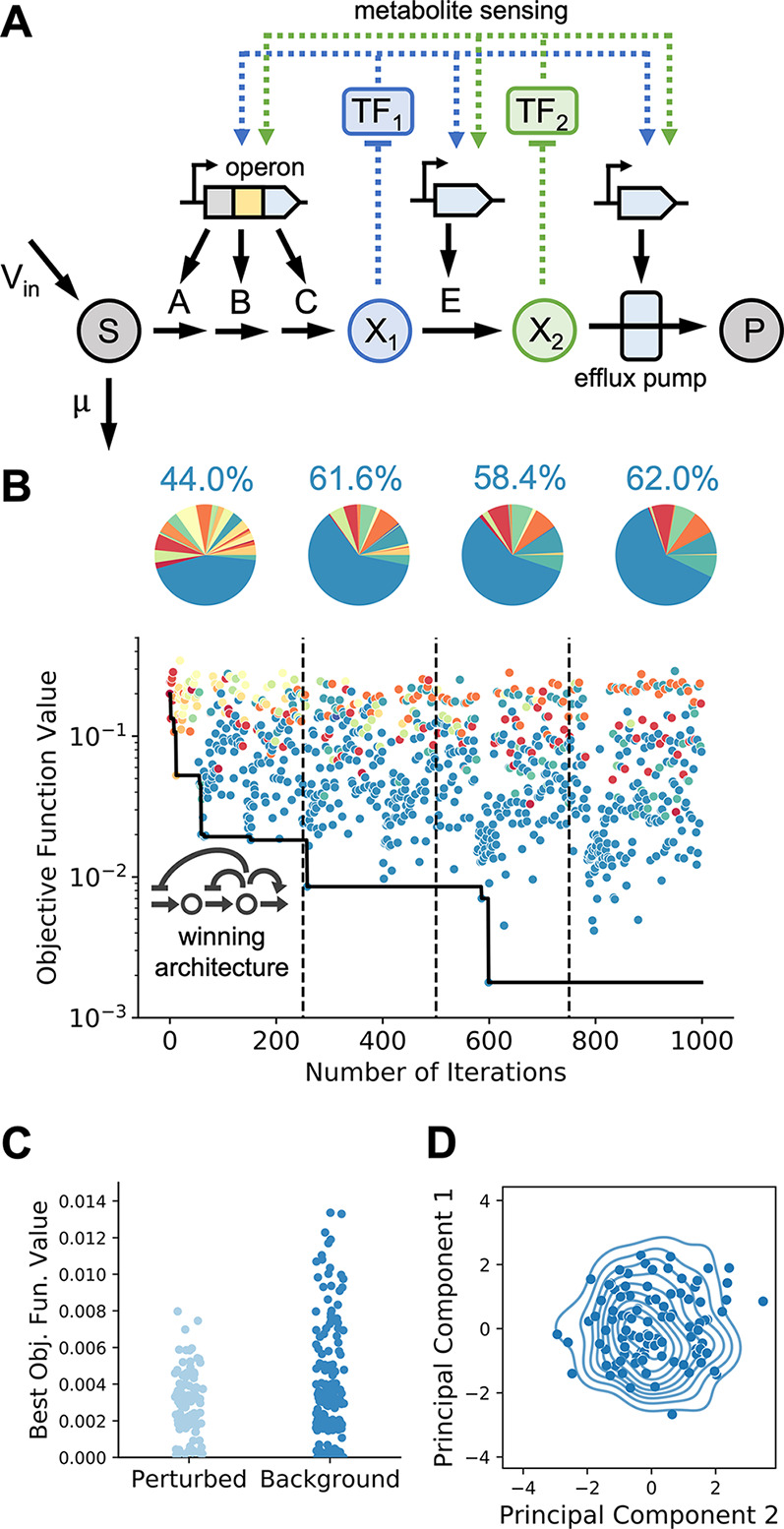Figure 4.

Bayesian optimization in a complex pathway. (A) Schematic of pathway for production of p-aminostyrene.34 Two intermediates can act as ligands for metabolite-dependent riboregulators, and three promoter sites of control. The optimization problem has 16 continuous decision variables and 27 circuit architectures. The substrate S is converted by enzymes A, B, and C to X1, which is then converted by E to X2. The toxic substrate X2 is then pumped out of the cell via an efflux pump to form the product P. Both X1 and X2 can act on the transcription factors TF1 and TF2. Vin is the constant influx to the engineered pathway from native metabolism. (B) Representative run of the BayesOpt algorithm; the method samples many architectures before settling on the optimal one. Pie charts show continued exploration of a large number of architectures. The winning architecture is shown in the inset. (C) The p-aminostyrene pathway has several forms of substrate, protein, and enzyme toxicity expressed via a toxicity factor τ (see eq 6). To explore the effects of protein and metabolite toxicity, we perturbed the toxicity factor. Metabolite-induced toxicity was perturbed on the nominal range (1 × 10–3, 1 × 10–4) and protein-induced toxicity on the range (1 × 10–4, 1 × 101) respectively. Both ranges were selected to match the ranges provided in the literature.34 Latin Hypercube sampling was used to generate N = 100 perturbed parameter values, and the optimal solutions were compared to an equal number of background solutions using the nominal parameter values. (D) Visualization of the optimal solutions; scatter plot of principal components of the optimal parameter values for the model with perturbed toxicity parameters (N = 100). Contour plots show the background distribution of parameter values.
